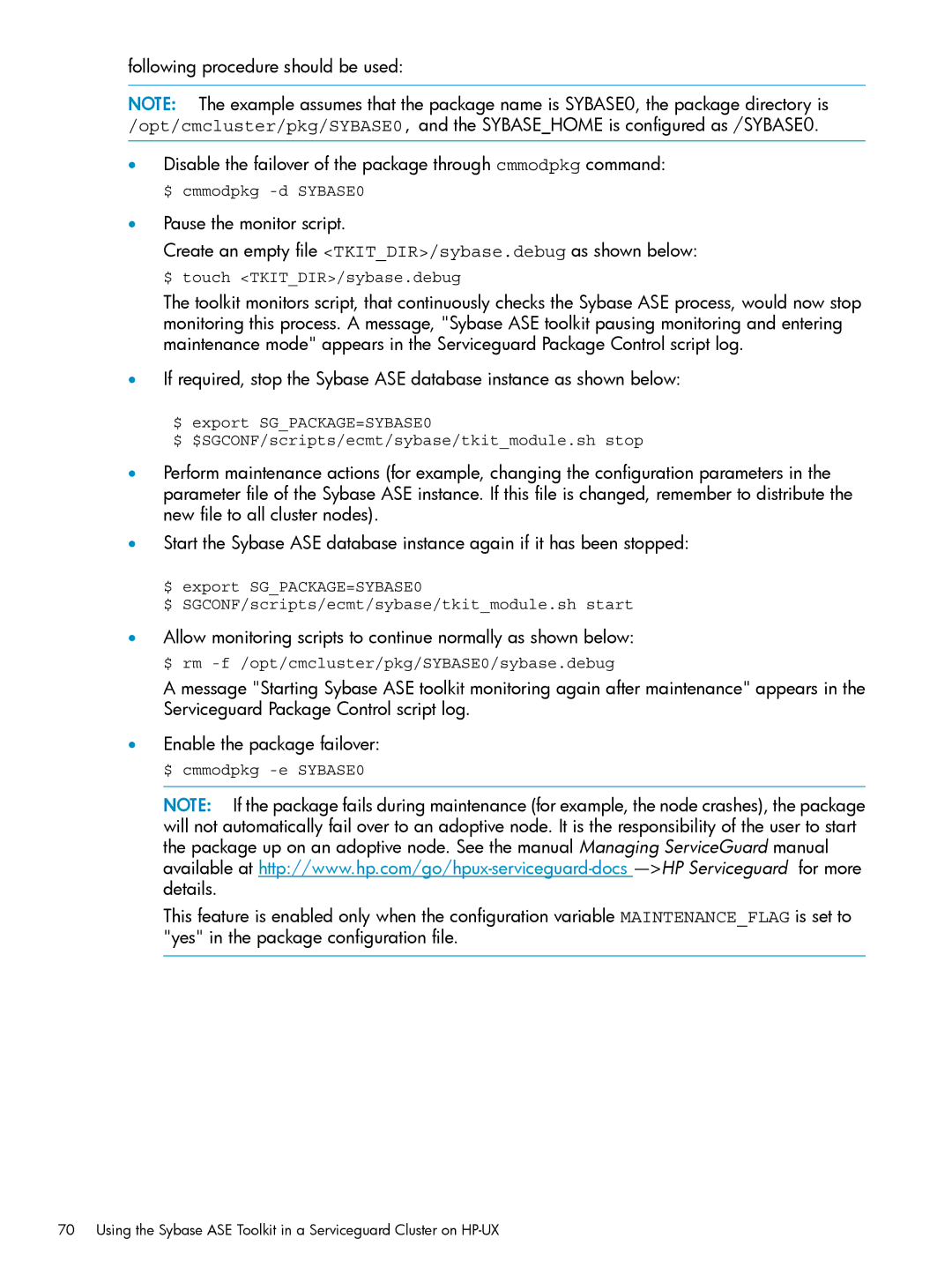
following procedure should be used:
NOTE: The example assumes that the package name is SYBASE0, the package directory is /opt/cmcluster/pkg/SYBASE0, and the SYBASE_HOME is configured as /SYBASE0.
•Disable the failover of the package through cmmodpkg command: $ cmmodpkg
•Pause the monitor script.
Create an empty file <TKIT_DIR>/sybase.debug as shown below: $ touch <TKIT_DIR>/sybase.debug
The toolkit monitors script, that continuously checks the Sybase ASE process, would now stop monitoring this process. A message, "Sybase ASE toolkit pausing monitoring and entering maintenance mode" appears in the Serviceguard Package Control script log.
•If required, stop the Sybase ASE database instance as shown below:
$ export SG_PACKAGE=SYBASE0
$ $SGCONF/scripts/ecmt/sybase/tkit_module.sh stop
•Perform maintenance actions (for example, changing the configuration parameters in the parameter file of the Sybase ASE instance. If this file is changed, remember to distribute the new file to all cluster nodes).
•Start the Sybase ASE database instance again if it has been stopped:
$ export SG_PACKAGE=SYBASE0
$ SGCONF/scripts/ecmt/sybase/tkit_module.sh start
•Allow monitoring scripts to continue normally as shown below: $ rm
A message "Starting Sybase ASE toolkit monitoring again after maintenance" appears in the Serviceguard Package Control script log.
•Enable the package failover: $ cmmodpkg
NOTE: If the package fails during maintenance (for example, the node crashes), the package will not automatically fail over to an adoptive node. It is the responsibility of the user to start the package up on an adoptive node. See the manual Managing ServiceGuard manual available at
This feature is enabled only when the configuration variable MAINTENANCE_FLAG is set to "yes" in the package configuration file.
70 Using the Sybase ASE Toolkit in a Serviceguard Cluster on
